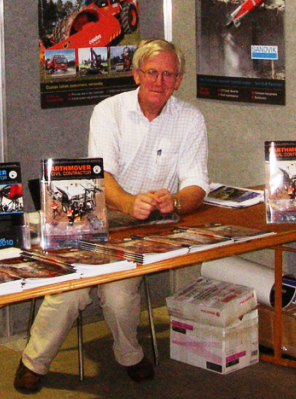‘World’s best gliders seek soaring supremacy in Benalla’
The exhilaration eagles and dolphins display, while surfing winds and waves for pleasure, have fascinated us for ever.
Palaeontologists believe pterodactyls with wingspans up to 7m, probably surfed waves of wind formed against mountain ranges millions of years ago. In comparison, humans have only fine tuned surf boards and gliders to roughly eagle and dolphin standards, in the last 50 or 60 years.
But you could say humans and wildlife now equally enjoy both types of waves together.
Terry Dillon of Benalla, Victoria, encountered that close connection when he was gliding near Bacchus Marsh, west of Melbourne. Initially he became alarmed when a wedge tailed eagle flew straight at him.
But it veered away at the last second and disappeared for a few minutes.
Then it reappeared to fly in formation just off his wing tip, clearly surfing the air waves the glider's wing generated, much as dolphins surf bow waves generated by ships.
Eagles can be aggressive in spring when young are hatching; just this year a 6kg Western Australian wedge tailed eagle smashed the Perspex of a glider’s cockpit in an attack. Fortunately the pilot was able to eject it quickly before it injured him and he later landed safely.
Dell McCann, also from Benalla, farmed on the Delatite River east of Mansfield until early 2016. A couple of summers ago she was delighted to see eight eagles spiralling upwards in just one thermal.
Then the next thermal moved down the valley – they start forming in the Victorian Alps near Mount Buller then move west – and there were four more eagles climbing effortlessly at maybe 300m per minute in that one too.
The eagles must have come a long way to enjoy the thermals because she only knew of one pair nesting nearby.
In Benalla in January 2017, about 180 pilots from 29 countries will be flying some of the most advanced gliders, worth up to around $500,000, to compete in the world gliding championships held every four years. Quite possibly they will be encountering eagles as well.
It is not by chance that Benalla was chosen for the championships because the area has some of the best gliding conditions in the world.
Certainly there will be talk of “thermalling gaggles,” as pilots manoeuvre under cloud bases where the best lift is usually found, to avoid fellow competitors and gain the height they need to travel to the next thermal on their cross country races.
In the 1930s gliders lost one metre of height for every 15m they moved towards their destination in still air; current gliders have more than tripled that efficiency to achieve a 50 to one glide ratio.
Airliners surprisingly achieve 15 to 20 to one glide ratios if engines fail. That means that from a normal 35,000ft (10,700m) cruising level, a powerless airliner could travel up to 182km depending on destination ground level.
The glider altitude record was set at 15,445m in Argentina putting it well above airliners.
While gliders have been equipped with compasses, air speed indicators, altimeters and variometers for decades, the latter a device to indicate when air is rising or sinking, now colour LCD displays of varying sizes also provide information about what the air is doing as well as fronting multi channel GPS receivers for precise navigation.
An ever present question pilots ask on a cross country race is, am I high enough and particularly, am I high enough to reach the finish point, without chasing more thermals?
But ultimately the best glider pilots feel their aeroplane performs as an extension of their arms and legs; that skill commonly enables them to fly at up to 300km/hr over 1000km or more.
Last summer Tim Shirley, who retired to Benalla to pursue gliding to his heart’s content, flew from Benalla to Temora and then Hay in New South Wales, before returning on the final leg of his triangular course to Benalla.
That 750 km trip took him about seven hours as he side tracked to take advantage of thermals along the way.
But once he reached Yarrawonga on his return trip at 6000ft (1830m), he knew he had enough height to reach Benalla nearly 70km away, without seeking more thermals.
David Palmer
October 2016


 RSS Feed
RSS Feed
